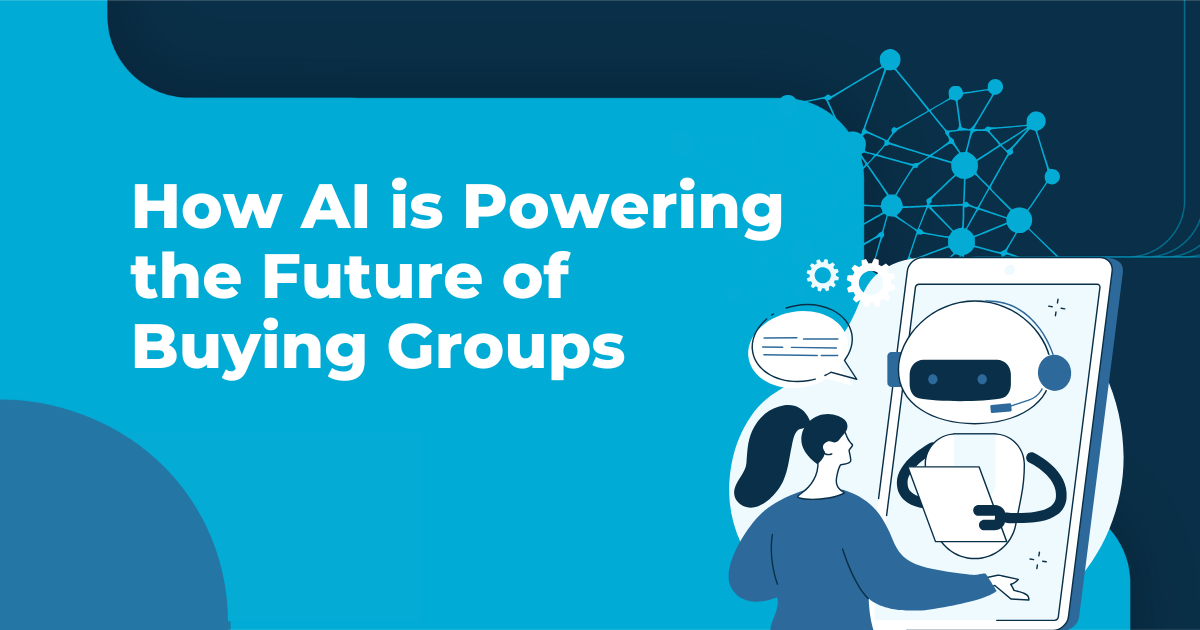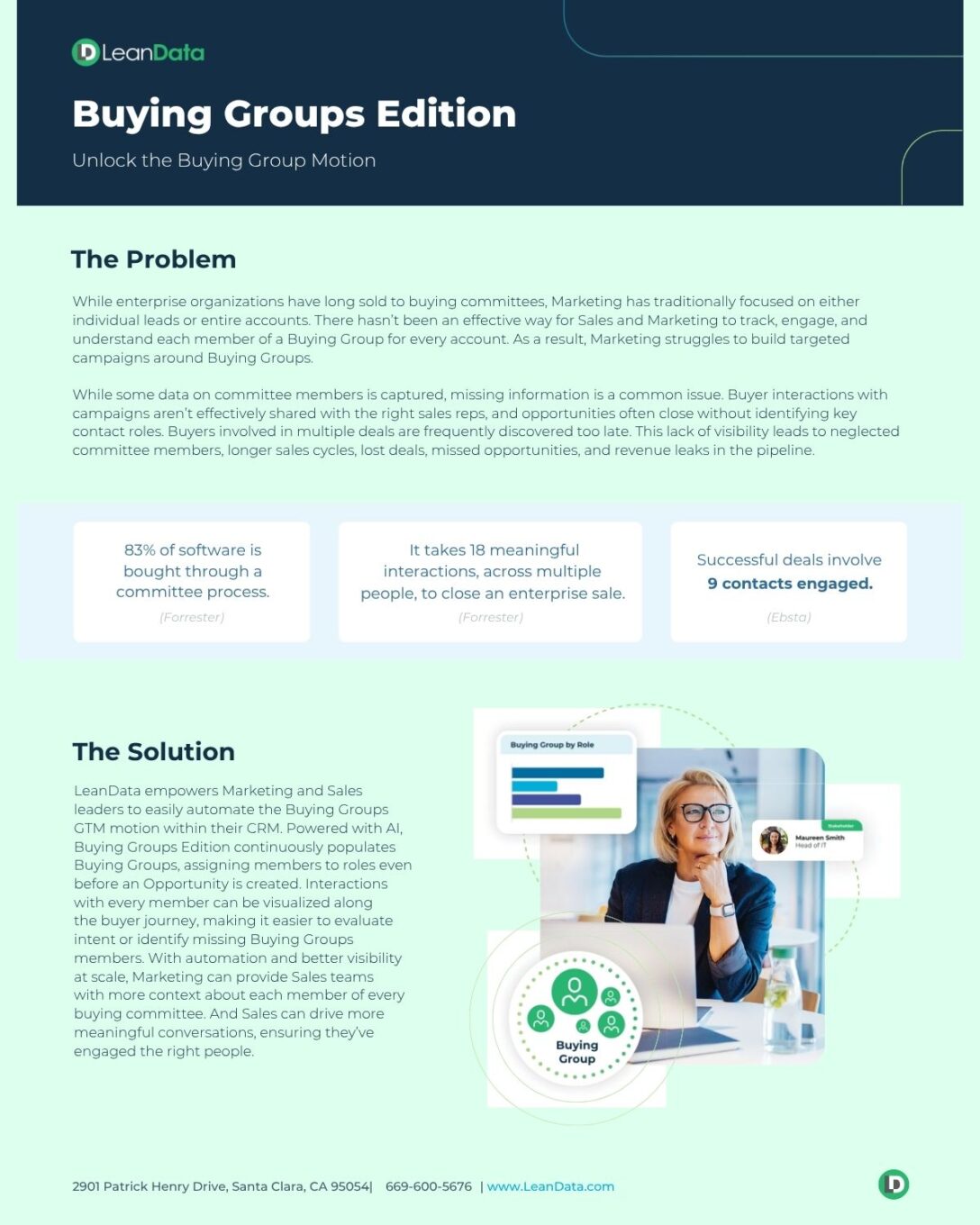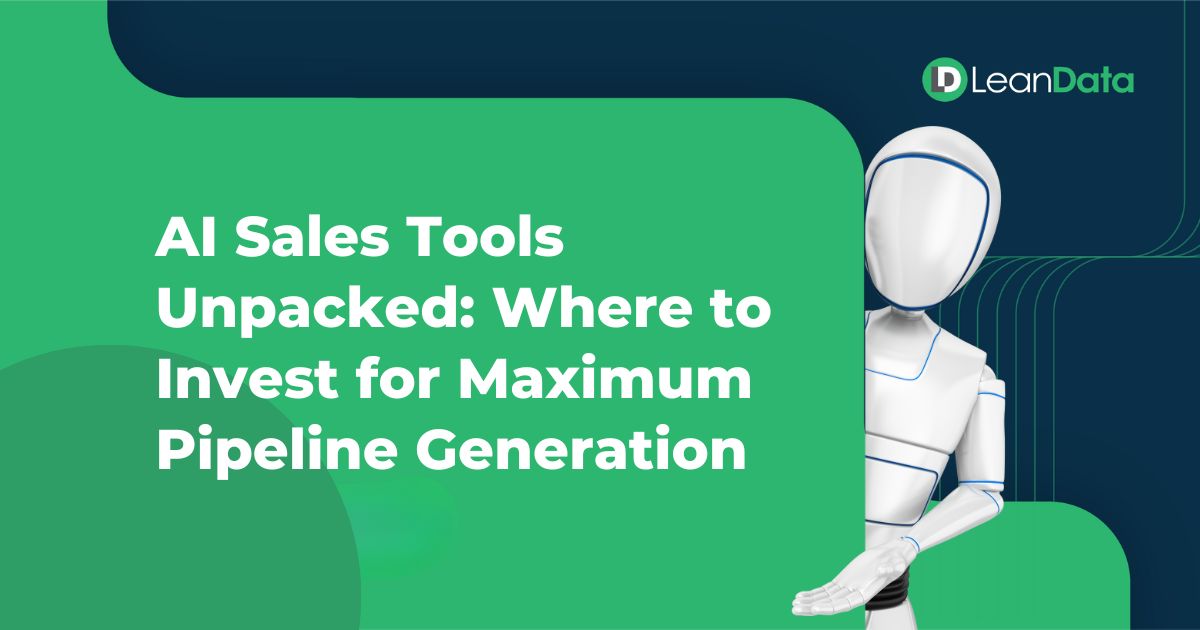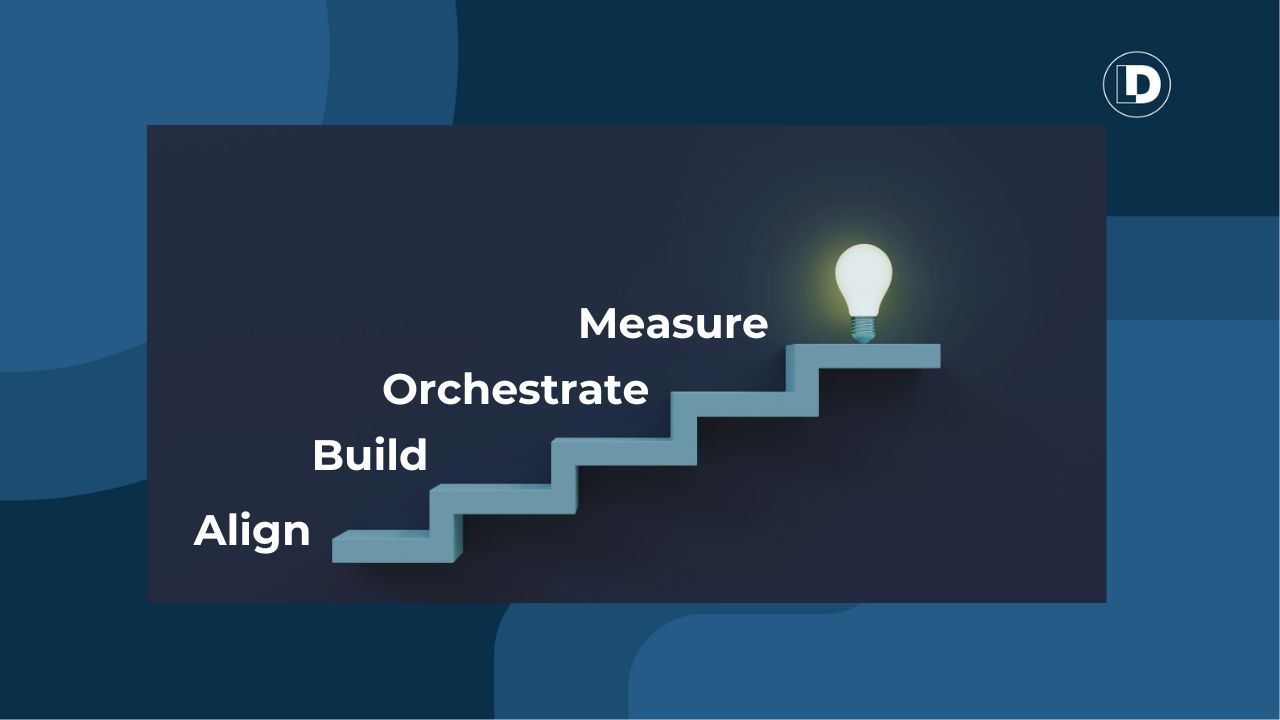In enterprise B2B sales, the real decisions rarely happen in a single office or with a single handshake.
They unfold in conference rooms, over video calls, and across Slack and Teams threads where six or more people, each with different priorities and perspectives, weigh in.
Miss one of them, and the deal can stall before it starts.
This is where AI is rewriting the playbook.
With LeanData’s latest AI capabilities in the Buying Groups Edition suite, revenue teams can pinpoint key decision makers in seconds, see exactly how they are engaging, and orchestrate the next move with precision.
These tools are not abstract concepts. They are working today to power the Buying Groups motion that forward-thinking organizations are already adopting.
Why AI Matters for Buying Groups
Without AI, buying group engagement often means manual research, fragmented data, and guesswork about who matters most in the decision. That slows down sales, increases missed opportunities, and creates inconsistent buyer experiences.
AI addresses these problems head-on by:
- Classifying stakeholders into accurate role-based personas
- Surfacing engagement gaps before they stall a deal
- Automating the handoff from marketing to sales when the right signals appear
- Routing opportunities to the right people at the right time
These capabilities mean GTM teams can spend less time piecing together a picture of the buying group and more time building meaningful connections.
AI-Powered Title Clustering: Faster Role Identification
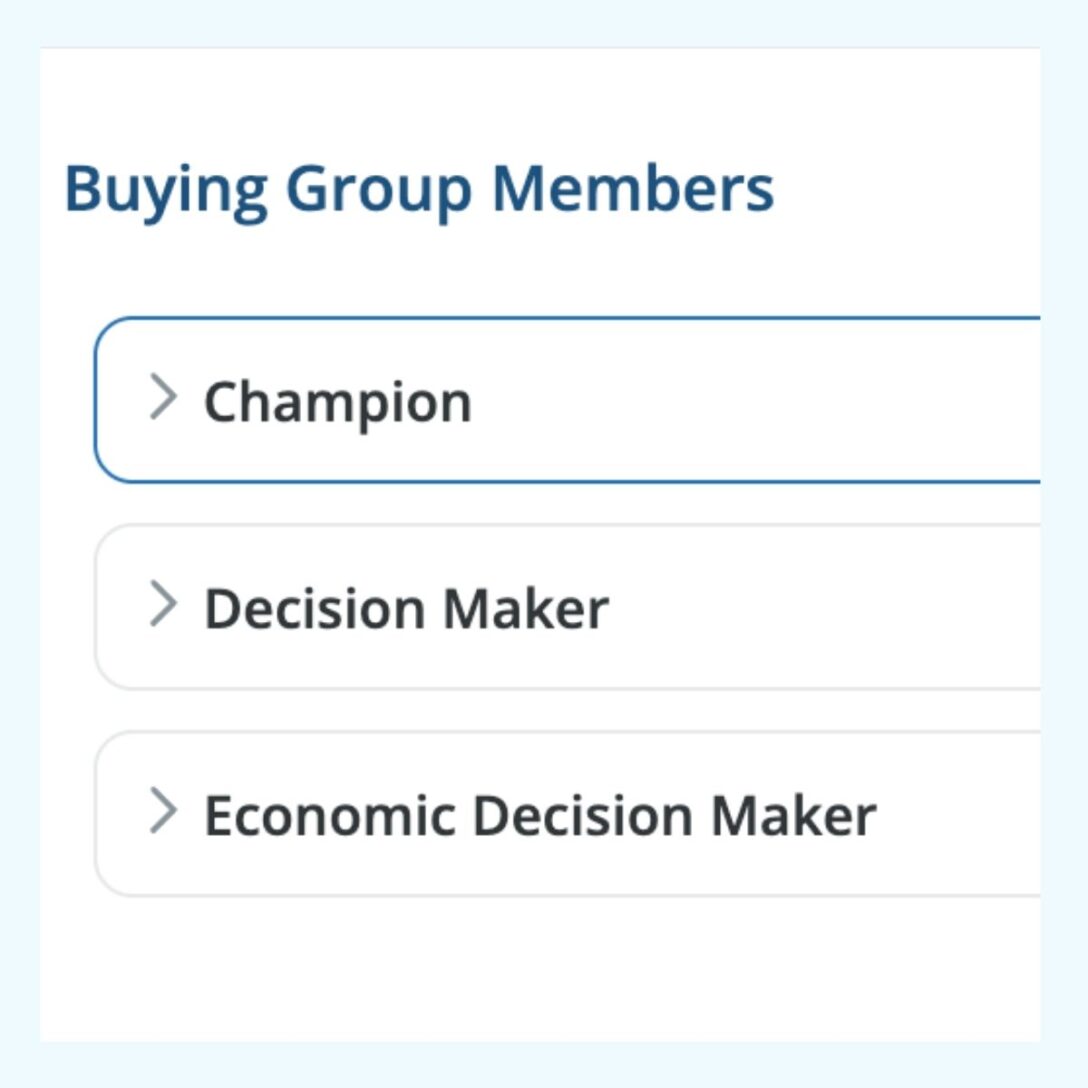
One of the most time-consuming parts of building a buying group view is deciding who each person is in relation to the decision.
LeanData’s Title Clustering uses AI to automatically categorize leads and contacts into personas based on their titles and seniority levels.
First, this saves hours of manual work by automating classification. Next, it improves targeting from the start of the engagement. Every stakeholder is aligned to a persona, such as economic buyer, technical evaluator, or influencer, without digging through records one by one.
The AI learns patterns from titles and levels, giving your teams a running start in personalizing outreach.
Journey Tracker with AI Insights: Visibility Across the Group
Knowing who is in the buying group is only the first step. You also need to see how they are engaging across the entire journey.
LeanData’s Journey Tracker Interface brings that into view by recommending likely group members based on their engagement signals, then showing their activity along a timeline.
Consequently, GTM teams can spot gaps in real time.
If an economic buyer has not been involved yet, that gap appears clearly so action can be taken before it slows the deal. This visibility spans from early marketing interactions through closed-won and even into post-sale expansion.
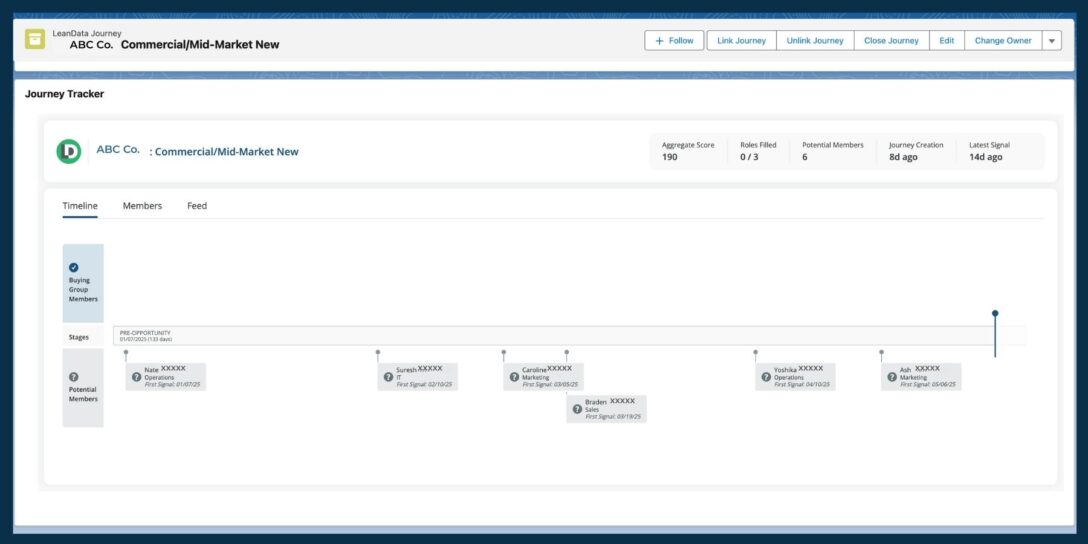
AI-Driven Journey Automation: Acting on the Right Signals
Once a buying group meets your defined criteria, speed matters.
LeanData’s Journey Automation uses AI to watch for the pre-opportunity signals you care about, like engagement with specific content or events, and trigger the next step without delay.
As a result, marketing-to-sales handoffs happen at the exact right moment, ensuring that decision makers receive timely, relevant outreach.
This consistency helps eliminate the lag that often occurs when humans must manually decide when to act.
Journey FlowBuilder: Precision Routing for Every Member
Routing is where a buying group strategy becomes execution.

With Journey FlowBuilder, LeanData lets teams create routing logic for the entire group once it qualifies or for individual members based on their roles.
For example, the group may be routed to one account executive while technical evaluators go to a solutions engineer. AI supports this by processing signals and determining the correct path automatically.
Plus, for companies with multiple product lines, separate groups can run in parallel within the same account, each routed according to its own rules.
How AI Makes the Buying Groups Motion More Effective
Bringing these capabilities together creates a Buying Groups motion that is faster, clearer, and more precise. GTM teams gain:
- Speed: AI reduces manual steps in identifying, classifying, and routing.
- Accuracy: Automated classification and engagement analysis reduce human error.
- Proactive Action: Gaps in engagement are flagged before they affect the deal.
- Consistency: Every group follows the same well-defined process.
AI as the Enabler of Modern GTM
The complexity of modern enterprise sales demands an approach that sees the entire decision-making team, tracks their engagement, and routes them intelligently.
LeanData’s AI capabilities give GTM leaders the tools to operationalize this motion without adding manual burden.
The result is a coordinated strategy that connects every decision maker to the right experience, exactly when it matters most.







